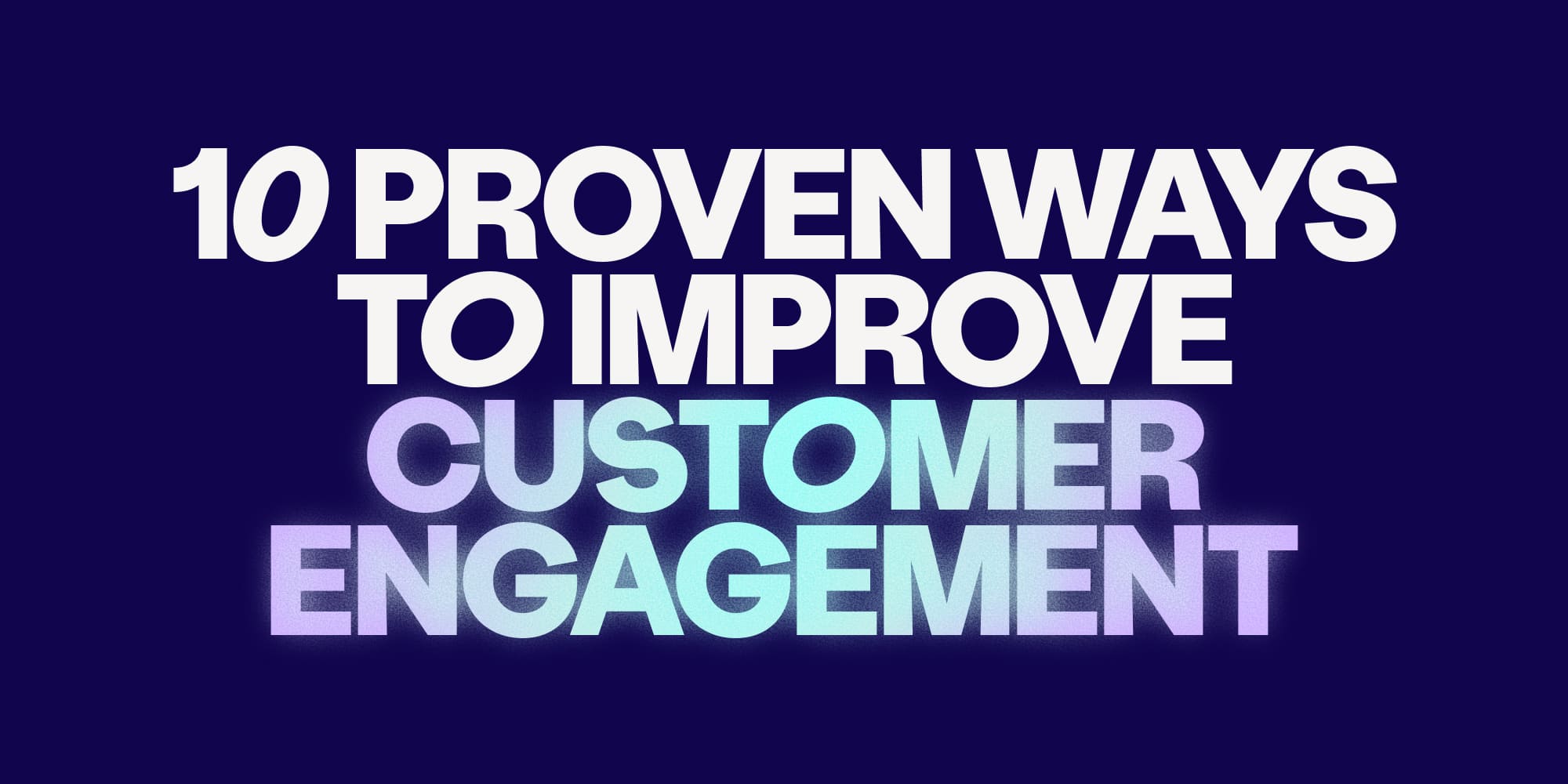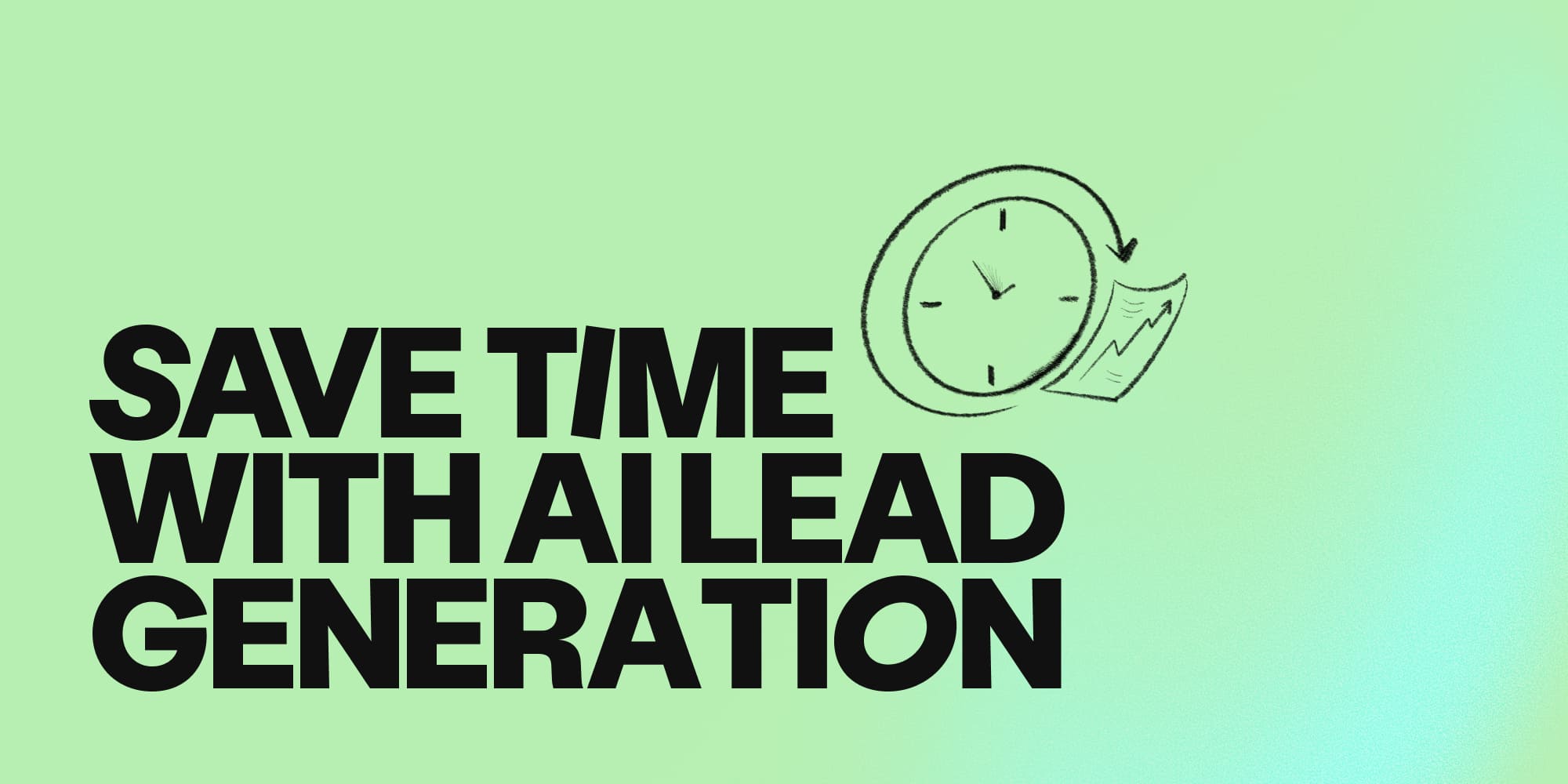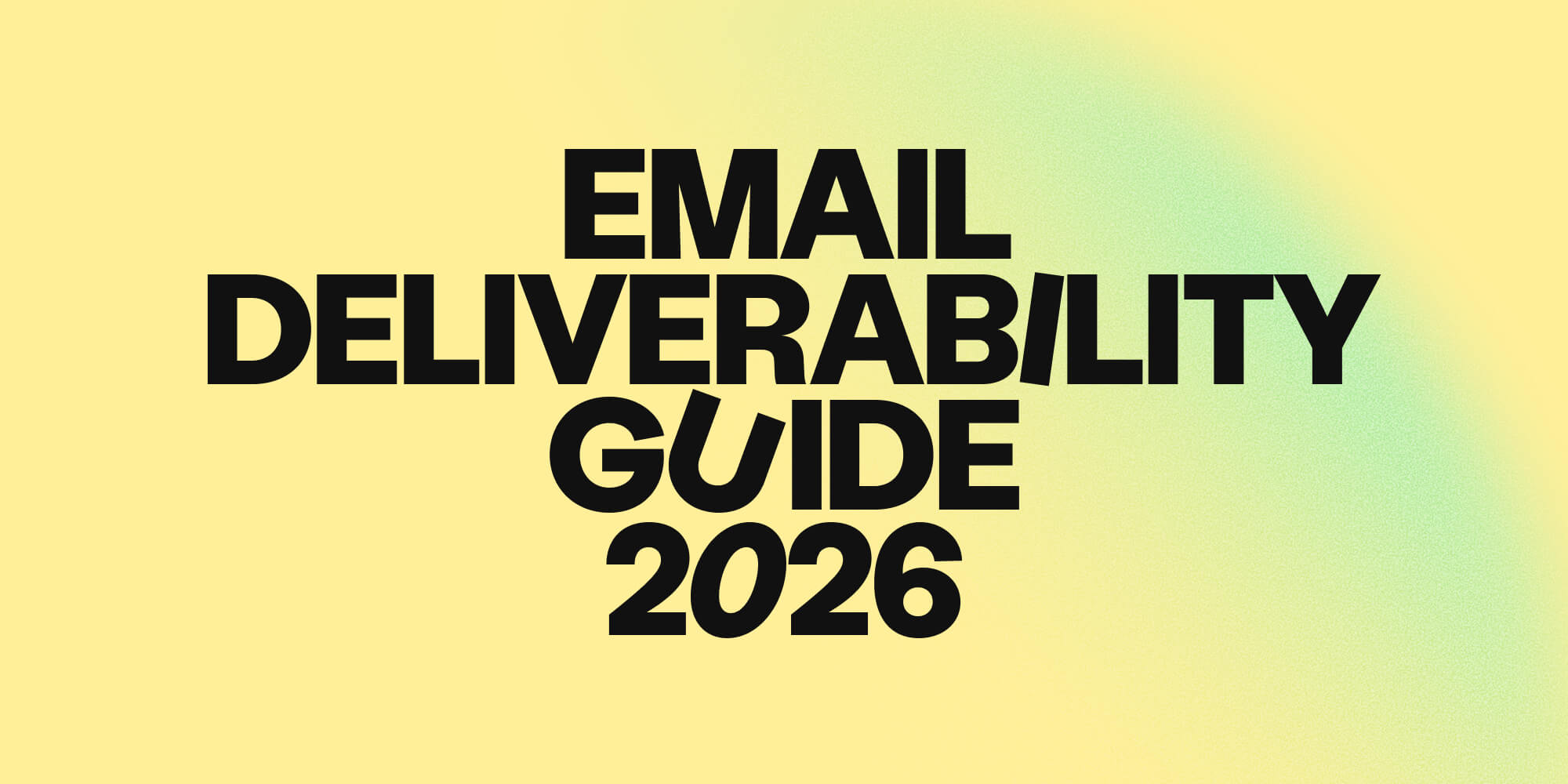What is customer engagement? 10 strategies to boost your business
•
June 25, 2024

Customer engagement isn’t just about getting people to sign on the dotted line; in fact, that’s only the beginning of the story. And considering it can be 5 times more expensive to acquire a new customer than to retain an existing one, the success of your ongoing engagement can significantly impact your bottom line. If you can reduce churn by just 5%, you can grow your profits by 60-80%.
In this blog, we'll delve into the essence of customer engagement, its importance for your business, and actionable strategies to enhance your B2B client engagement. As you’ll see, successful engagement with individual customers can produce a ripple effect that not only helps secure your existing book of business but can also open new opportunities.
What is customer engagement and why is it important?
Customer engagement encompasses the ongoing interaction between a business and its clients. The initial buying journey and closing of the deal is where the engagement starts, but the process of interaction continues as the customer is onboarded and settled into using your solution.
Sometimes the task of customer engagement will be passed from sellers (who closed the deal) to Customer Success Managers or Account Managers who will help the client unlock the full value of your product of service. It involves actively fostering relationships, providing value at every touchpoint, and ultimately, cultivating loyalty that lasts.
But customer engagement is a two-way street: it isn’t just about adding value for the client. Your business also benefits by collecting data that can inform product development decisions, your go-to-market strategy, and help understand your brand’s perception.

Why you need a customer engagement strategy
Having a secure customer engagement strategy in place ensures consistency and value of interaction with each of your customers and reduces the risk of any clients being forgotten at any point in your funnel.
The benefits of having an engagement strategy include:
- Improved customer relationships: Regular communication and personalized interactions foster rapport, building stronger human connections with your clientele.
- Enhanced loyalty and retention: Engaged customers are more likely to remain loyal to your brand, which helps reduce your churn rates, increase your average customer lifetime metrics, and boost long-term profitability.
- Uncovering upsell opportunities: By understanding your customer's needs and preferences, you can identify opportunities to upsell additional features or services and increase your customer value metrics (customer value = average value of sale x average number of transactions).
- Streamlined purchase cycles: A well-crafted engagement strategy streamlines the buying process, guiding prospects seamlessly from awareness to conversion and renewal when the time is right.
- Increased user base: The more your customers actively engage with your brand, the more exposure your solution enjoys, and the more potential for new selling opportunities!
- Valuable customer insights: Every interaction - be it during the buying, onboarding, or renewal process - is a chance to glean valuable feedback that will help you refine your marketing strategies, optimize sales processes, and improve overall customer experience amongst your target audience.
What's the difference between customer engagement and customer satisfaction?
They might sound the same, but customer engagement and satisfaction are distinct concepts.
Customer satisfaction measures how content a customer is with a specific product, service, or experience, while engagement involves ongoing interaction and relationship-building beyond individual transactions.
While satisfaction reflects a customer's perception of your offering and the value they derive from it, engagement encompasses the depth and quality of interactions with your brand and team over time.
What's the difference between customer engagement and customer experience?
Again, it’s important to understand the difference between these ideas!
Customer experience (CX) describes the larger holistic journey customers undergo when interacting with your brand and encompasses every touchpoint from marketing to post-purchase support. That means it could include anything from targeted advertising to personalized outreach, tailored demos and onboarding to customizable user experience (UX) in your product, product usability and so on.
On the other hand, customer engagement refers more specifically to the level and nature of interaction and connection between a customer and your brand across various channels.
For instance, engagement relates to whether a customer leaves your solution a G2 review, engages with your social media posts, consumes your content, or provides direct feedback on your solution.
Customer satisfaction and customer engagement are both elements of the broader CX picture, but none of the terms is quite interchangeable!

Examples of customer engagement in action
By now it should be obvious that customer engagement can - and should - be nurtured across multiple channels. This helps maximize the benefits for both your business and your client!
Here are some examples of what customer engagement could look like in practice:
- Participation in industry events: Hosting or attending conferences, webinars, or workshops allows customers to engage with your brand, learn about industry trends, and network with peers.
- Joining loyalty programs: Rewarding customers for their loyalty through exclusive offers, discounts, or rewards programs encourages continued engagement and repeat purchases.
- Providing feedback: Actively soliciting and responding to customer feedback demonstrates your commitment to meeting their needs and keeping communication open - and clients love to feel directly involved in the development of their favorite products.
- Referring your solution: When a customer goes out of their way to refer your solution to a similar prospect, they’re not only providing you with valuable business; they’re also showing the strength of their approval for your product.
- Interacting with content: Customers who regularly engage with your social content, company news, or blog posts are demonstrating a sense of affinity with your brand.
- Leaving third-party reviews: Keep tabs on G2, TrustPilot, Capterra, and other relevant industry review sites to see which of your customers are taking the time to review your solution.
- Reading your newsletter: If customers are opening and reading your product updates or marketing news, it’s a sign they’re happy to engage with your brand outside of your product or service.
10 strategies to enhance customer engagement
With all that said, how do you go about developing an effective customer engagement strategy?
Here’s a 10-step framework to get you started:
1. Increase customer engagement with personalized service
Modern consumers crave personalized experiences. To deliver them, you’ll need to use customer data to make messages and content unique to each individual audience member. A prime example involves making product recommendations based on a customer’s purchase history.
With so much competition out there, you need a definitive way to stand out. Personalization is a great way to make customers feel special and connected to your brand. It nurtures loyalty, increases the average customer lifetime value, and helps keep customer acquisition costs (CAC) low.
When it comes to collecting data, you must comply with regional legislation and be fully transparent! Overstepping ethically can lead to privacy concerns and erode customer relationships, possibly violating regulations like GDPR or CCPA.
2. Implement a chatbot to improve customer engagement
Chatbots are AI-powered tools that analyze customer queries and engage with users or website visitors. A chatbot should greet a user as soon as they navigate to key pages on your website, such as landing or service pages. Advanced bots can engage in basic conversation, answer complex customer questions, and even make product recommendations to returning customers.
To use chatbots effectively, set up appropriate triggers to ensure the software steps in when users need support. Incorporating chatbots into your website streamlines the delivery of support, removing friction from customer journeys and enhancing the overall experience. Chatbots can also answer consumer questions outside your normal business hours, minimizing customer frustration.
You can maximize chatbot benefits by using them in conjunction with human agents. Your team will need to follow up on the preliminary information gathered and take over conversations when customers ask for complex assistance.
3. Engage in conversational marketing to enhance customer engagement
Conversational marketing focuses on building strong relationships with consumers rather than immediately addressing purchase inquiries or systematically working to resolve support tickets. Shifting to more relaxed conversational exchanges can remove friction from the customer journey and reduce frustration.
This approach also gives your team a chance to better understand its audience and deliver better service. Most importantly, it builds lasting relationships that benefit both your brand and the customer.
To engage in conversational marketing, implement a system for tracking interaction history across channels. This ensures that every team member is aware of past conversations' context, preventing the customer from having to restate their problem and streamlining support delivery.
4. Practice active listening to increase customer engagement
Active listening involves paying attention to what your customers are saying across channels. Make it easy for your customers to provide feedback by adding a feedback form to your website and ensuring your team responds promptly, especially to negative feedback.
Incorporating active listening into your strategy gives you insight into how your brand is viewed. You can determine whether customers are comparing your brand to a competitor, discussing support experiences, or sharing positive feedback about your products and services.
Track what customers are saying across all channels, including review platforms, social media, and your website. Be responsive to their concerns and feedback within reason.
5. Leverage social media marketing for B2B customer engagement
Social media channels like LinkedIn and Twitter are as important as traditional methods like email or paid search. These platforms allow you to interact with your audience in a less formal way, gather feedback, and understand how they truly feel about your products and services.
Social media marketing lets you respond directly to consumer concerns, demonstrating that your brand cares about its customers. You can even turn negative engagement into positive interactions by addressing complaints promptly and posting frequently to keep customers engaged.
6. Provide valuable content to boost customer engagement
Offering unique and useful content keeps customers engaged with your brand and encourages them to return to your channels. This long-term strategy delivers value without requiring a purchase, establishes a strong SEO presence, and helps you rank high on SERPs.
Providing valuable content builds trust and establishes your site as an authoritative source. From a marketing perspective, publishing content generates quality organic traffic, some of which will convert into leads. You can use multiple formats like videos, eBooks, and blogs to build brand consistency across more channels.
7. Listen to and act on feedback using analytics to improve customer engagement
Listening to customer feedback helps you understand what they like and what they’d like to be different. This insight can help you tailor your marketing efforts to align with your target audience’s unique needs.
Gathering and applying feedback is valuable for continuous improvement. Use customer insights to refine products, optimize content, and streamline your sales funnel.
Always look for opportunities to gather feedback and pay attention to comments on social media.
8. Launch a customer loyalty program as part of your customer engagement strategy
Customer loyalty programs offer incentives and rewards to customers who continue to engage with your brand. Programs could include promotions, a point system, or thank-you gifts.
Loyalty programs strengthen relationships with existing customers, encourage repeat purchases, and gamify the purchasing experience create extra incentives.
9. Understand your customer journey for better digital customer engagement
Familiarizing yourself with your target audience and their journey from awareness to purchase helps you effectively apply customer engagement strategies. Conduct extensive research, gather feedback, and analyze demographic data to refine your operational profile of their needs and preferences.
Knowing your customers on a deeper level helps you deliver personalized experiences, so you can create curated content that speaks to each audience segment for better ROI and streamline consumer journeys. Invest in robust marketing and experience personalization tools with analytics capabilities to increase your understanding of the customer journey.
10. Use video to capture attention in customer engagement marketing
Video content captivates audiences, retains customers, and draws viewers deep into the sales funnel. It is versatile, engaging, and effective in enhancing various stages of the customer journey.
Use video to intrigue prospects with short clips, educate customers with long-form content, or interact directly through live social media sessions. Always start with a great premise to capture your audience’s attention quickly and deliver an on-brand, relevant, and entertaining message.
Customer engagement metrics to track
Here are some essential customer engagement metrics for you to consider:
- Net Promoter Score (NPS): NPS measures customer loyalty and satisfaction by asking customers how likely they are to recommend your company to others. A high NPS indicates strong customer advocacy and positive brand perception.
- Customer Satisfaction Score (CSAT): CSAT measures the satisfaction level of customers based on their recent interactions with your brand. It typically involves post-interaction surveys to gather feedback and identify areas for improvement.
- Customer Effort Score (CES): CES assesses the ease of doing business with your company from the customer's perspective. It measures how much effort customers had to exert to resolve an issue or complete a transaction, with lower scores indicating a smoother experience.
- Customer Value: Average value of each individual transaction multiplied by the average number of transactions.
- Customer Lifetime Value (CLV): Customer value multiplied by the average customer lifespan.
- Churn rate: Churn rate measures the percentage of customers who stop using your product or service over a specific period. A high churn rate signals dissatisfaction or disengagement among your customer base and highlights the need for intervention to retain customers.
- Behavioral analytics: Behavioral analytics track customer actions and interactions with your brand across various touchpoints. This includes website visits, email opens, social media engagement, and more, providing valuable insights into customer preferences and engagement patterns.
- Qualitative feedback: In addition to quantitative metrics, qualitative feedback offers valuable insights into customer perceptions, preferences, and pain points. This includes customer reviews, comments, and direct feedback gathered through surveys or focus groups.
Better customer engagement, better business results
Customer engagement means deriving the maximum value - qualitatively and quantitively - from each customer relationship to drive loyalty, and ultimately, fuel your business growth. By implementing a consistent engagement strategy and leveraging proven tactics, you can enhance your overall customer experience, maximize customer lifetime value, and position your brand for long-term success.
Perfect customer relationships have to start somewhere! Request a demo to see how Amplemarket can help you find and close your next best customers in record time.
FAQs on how to increase customer engagement
Why do you need a customer engagement strategy?
A customer engagement strategy ensures consistent, valuable interactions with your clients, helping to build strong relationships and foster loyalty. It also uncovers upsell opportunities and streamlines the purchase cycle, enhancing overall profitability.
What's the difference between customer engagement and customer satisfaction?
Customer satisfaction measures how content a customer is with a specific product or service, while customer engagement involves ongoing interactions and relationship-building beyond individual transactions. Satisfaction reflects a moment in time, whereas engagement is about long-term connection and loyalty.
What's the difference between customer engagement and customer experience?
Customer experience (CX) encompasses the entire journey a customer has with your brand, from initial contact to post-purchase support. Customer engagement specifically refers to the ongoing interactions and connections between a customer and your brand across various channels.
What are the 4 P's of customer engagement?
The 4 P's of customer engagement are Personalization, Predictive Analytics, Proactivity, and Partnership. These elements ensure tailored, data-driven, proactive interactions that build strong, collaborative relationships with customers.
What are the 4 Rs of engagement?
The 4 Rs of engagement are Recognition, Rewards, Relevance, and Relationships. These focus on acknowledging customers, offering incentives, ensuring meaningful interactions, and building lasting connections.
What are some customer engagement examples?
Customer engagement can include hosting or attending industry events, loyalty programs, soliciting and acting on feedback, encouraging referrals, engaging with content, leaving reviews, and reading newsletters. These activities help build stronger connections and demonstrate customer value.
Could I be using analytics to improve customer engagement?
Yes, analytics can significantly enhance customer engagement by tracking behavior, segmenting audiences, and measuring key metrics. Predictive analytics and feedback analysis also help anticipate customer needs and improve engagement strategies.
Subscribe to Amplemarket Blog
Sales tips, email resources, marketing content, and more.










